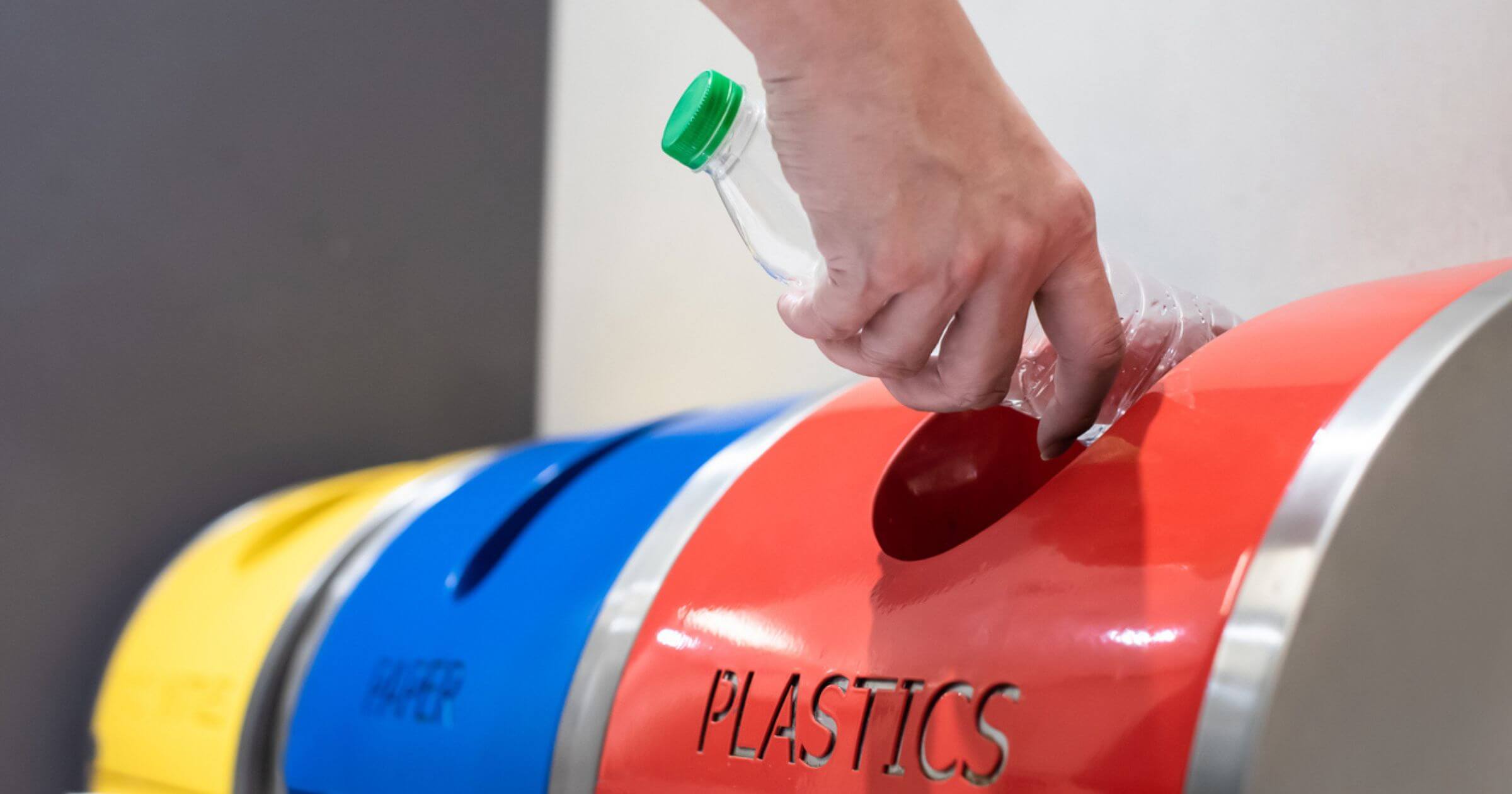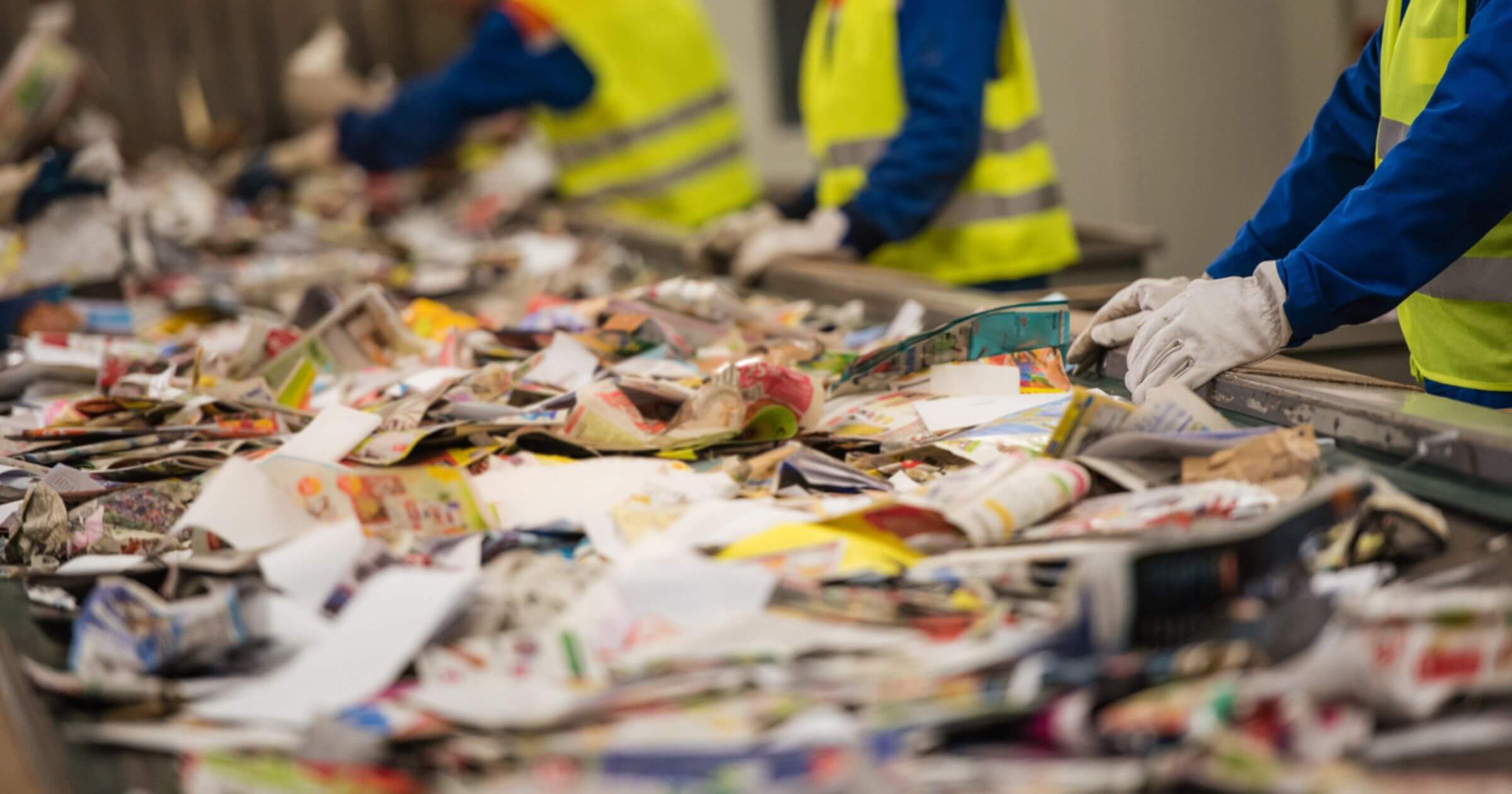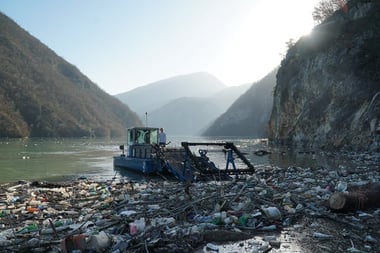According to the OECD, only 9% of the world’s plastic waste is recycled. That’s a lot of waste left unattended, given that global plastic waste comes to an estimated 350 million metric tons each year.
But in a circular economy, products and materials wouldn’t be discarded at the end of their lifecycle, meaning these massive quantities of waste would be reduced — or even eliminated.
Here, we’ll explain just how and why a circular economy could be the greenest way forward for our planet.
What’s on this page?
01 | What is a circular economy?02 | How does a circular economy work?
03 | Why do we need a circular economy?
04 | What are the benefits of a circular economy?
05 | Examples of a circular economy
06 | How do we transition to a circular economy?
07 | Is a circular economy the future?
08 | FAQs
What is a circular economy?
In a circular economy, existing products and materials are reused and reintroduced into the buying cycle for as long as possible. The goal is to continue the cycle in as environmentally friendly a way as possible.
How is a circular economy different from a linear one?
In a linear economy, a product is used once and then thrown away, despite either having more potential for use as it is or being made of reusable materials. It’s often called the “take-make-waste” economy, and for good reason.
A circular economy is focused on sustainable consumption practices, while a linear economy uses and discards without regard for environmental wellbeing.
How does a circular economy work?
A circular economy works by reintroducing products and materials into the cycle at the point where a linear economy would discard them. Circular economies are regenerative, and they work in a way that benefits people, businesses, and the environment.
A circular economy can be explained by three actions:
- Eliminating waste and pollution
- Circulating products and materials
- Regenerating nature
To give you a better idea of what a circular economy is and how it works, we’ll explain each action in more detail below.
Eliminating waste and pollution
As it stands under the linear economy, we take raw materials from the earth, make them into products, and then dispose of those products — thereby creating waste. In the EU alone, this type of raw material extraction and processing accounts for around 18% of total greenhouse gas emissions associated with the consumption of goods and services.
The good news is that it doesn’t have to work this way. If we start to frame reusability as part of good product design, then we’ll end up with products that are able to be reintroduced to the economy at the end of their lifecycle.
This goal is extremely doable when we remember that waste is a concept we’ve introduced ourselves — nothing in nature goes to waste without our intervention!
Circulating products and materials
We can keep products and their parts circulating in the economy by designing them to be long-lasting and reusable, and by making them out of bio-based materials like wood or sorghum that can either return to natural environments or be reused in another product.
Surprisingly, plastic has a role to play in the system too. To get a better understanding of this, we spoke with packaging expert Dan Coppins, about how plastic could contribute to a circular economy:
"The reason that plastic [in the UK] is particularly good, is because if you can make it a monomer material, which is just one polymer, it can be recycled several times in multiple ways, to ensure that it gets reused, as opposed to disposed of.
And this is the whole point of what a lot of people in the industry are working towards: the circular economy. " – Dan Coppins, Packaging Technologist & Sustainability Consultant
This type of circulation not only saves important natural resources from overuse — it also conserves energy and labor by requiring less production across the board.
Regenerating nature
A linear economy actively damages the environment — so even an economy that wreaks no havoc on the natural world would be an improvement. But a circular economy can take this one step further by improving the environment as well.
This is done by both avoiding the use of non-renewable materials and enhancing renewable resources – by returning nutrients to the soil, for example.
Why do we need a circular economy?
Much of the world’s plastic waste is attributable to single-use items in the linear economy. The effects of this system are all around us, and growing — resource extraction has tripled since 1970, and is projected to grow by an additional 70% by 2050.
The linear economy is also responsible for the fact that about 45% of global greenhouse gas emissions come from product use and manufacturing as well as food production.
Implementing circular economy strategies could reduce the world’s greenhouse gas emissions by 39% by 2032 – that’s 22.8 billion tons less, roughly equivalent to the amount of carbon that would be sequestered by over 27 billion acres of US forests in one year.

What are the benefits of a circular economy?
By now, it’s clear that a circular economy is more beneficial than a linear economy in the environmental sense. But its benefits span more categories than you might think, so we’ve delved into a few below.
Environmental benefits
The environmental benefits of the circular economy are clear: reusing products would slow down the use of natural resources, reduce disturbances to habitats and landscapes, and reduce greenhouse gas emissions.
It’s estimated that the design phase determines over 80% of a product’s environmental impact, so the circular economy’s design-oriented approach to creating reusable, regenerative products would go a long way toward creating a more sustainable system.
However, according to Dan Coppins, redesigning a product to make it suitable for the circular economy isn't as easy as it seems.
"It's really straightforward to create something new and plan it out. The difficulties really come when you have an existing product, and you want to improve its sustainability credentials. It's a lot of impact. For a consumer, they'll see a new package on the shelf, and it's great.
But behind the scenes, there is all the testing that needs to be done to make sure there's no interaction between the packaging and the formulation. You've also got different machinery that could be required to make it, and a different supply stream that comes with that as well." – Dan Coppins, Packaging Technologist & Sustainability Consultant
Economic benefits
The circular economy offers a $4.5 trillion economic opportunity by encouraging green innovation and job creation. It would have positive effects on various industries.
For example, having less plastic waste in the ocean would see boosts in both fishing and tourism. And while linear jobs may be lost, one report found that 24 million new jobs could be created globally by 2030 if the right circular economic policies are put in place.
It’s true that many of these new, green jobs — in spaces like renewable electricity and ecosystem services — won’t be direct replacements for the linear jobs that will be lost. That’s why reskilling and training programs are important to ensure that workers won’t be left in the lurch.
And still, most sectors will benefit from the net job creation of a circular economy — of the 163 economic sectors analyzed in the same report, only 14 are predicted to suffer employment losses of more than 10,000 jobs worldwide. The biggest losses would be in petroleum extraction and petroleum refining.
Societal benefits
The job creation we’ve mentioned above is just one example of how a circular economy can benefit individuals and communities. By using and protecting more natural resources, we can reduce the air, water, and soil pollution that causes over nine million deaths each year.
By eliminating this waste, a circular economy will also protect the biodiversity of the earth’s many habitats. The highest levels of biodiversity are found in tropical forests, which are a lifeline to many people in different ways: 1.6 billion people rely on forests for their livelihood, while a quarter of modern medicines are derived from tropical forest plants.
Examples of a circular economy
The concept of a circular economy can be applied across sectors and occupations. At the end of the day, every area can stand to be improved by using more renewable materials, and by designing for durability and reuse.
Below, we’ve outlined a few examples of what a circular economy looks like in different contexts.
Plastic
Plastic production is largely dependent on the use of fossil fuels — in fact, over 99% of plastic is made from chemicals sourced from fossil fuels. When these plastics are used in the linear economy, the odds are high that they will leak into natural environments. It’s estimated that there will be a heavier weight of plastic than fish in the sea by 2050.
So how do we reckon with plastic in a circular economy? For starters, the goal should be to reduce unnecessary plastic use while also trying to capture plastics before they leak into the environment as waste.
The next step is to eliminate single-use plastics and start using more recyclable materials, such as polymer plastics.
Want to reduce your business’s plastic footprint? We can help. All you have to do is get in touch with our in-house team using the form below. Once we’ve received your details, we can arrange a call to discuss which plastic recovery plan will suit your business needs best.
Clothes
An estimated 92 million tons of clothing end up in landfills each year. That’s the equivalent of one garbage truck full of clothes being thrown into a landfill every second.
The huge amount of waste produced by the textile industry can be reduced by creating clothes out of quality materials, like hemp or organic cotton, that are designed to last, as opposed to the current “fast fashion” dominating the market — currently, clothing production has doubled while garment usage lifetime has decreased.
Other things we can do to create a more circular clothing economy include recycling old garments, using bio-based materials, and creating more eco-friendly ecommerce practices and returns programs.
Want to find brands that make a difference? Check out our list of Best Sustainable Clothing Brands to Watch Out For.
Trade
Trade involves transporting goods and products around the world, and this doesn’t come without an environmental cost. Shipping alone emits 1,000 metric tons of CO2 each year — that’s the equivalent of the emissions of 223 gas-powered cars on the road for one year.
In order to make trade more circular, we need to think about how to prevent the unnecessary transport of products. Online clothing shops, for example, can add more specific sizing guides to prevent returns. Other retail stores can offer discounted refills of their products when customers return with their original, reusable containers.

How do we transition to a circular economy?
The transition to a circular economy will need involvement from all parts of society. Below, we’ve outlined what governments, businesses, and individuals can do to facilitate this change.
Governments
Governments can assist with the transition to a circular economy by implementing regulations for businesses, and by setting standards for individuals to adhere to.
One example of a strong policy is France’s Anti-Waste and Circular Economy Law, which includes phasing out single-use plastic packaging by 2040.
Some developing nations are also implementing laws that will work towards a circular economy. For example, the Philippines recently introduced its Extended Producer Responsibility (EPR) legislation in a bid to combat its mammoth plastic waste problem. We explain the ins and outs of this in our guide to the EPR Law in the Philippines.
Businesses
More circular workflows can be achieved across industries too. For example, shoe manufacturer Thousand Fell has launched a scheme where consumers can return their shoes in-store to be recycled, while furniture giant IKEA has started reselling lightly used items.
During our chat with Dan Coppins, he suggested the best way for brands to start this process is by having a packaging assessment from an expert, who can review what your packaging looks like and what are you trying to achieve. He goes on to explain, "We'll then re-engineer and cost engineer to ensure that it is cheaper where possible and more efficient in everything that does — that's carbon efficient, energy efficient, and time efficient."
Want to get the ball rolling? Start by getting a packaging assessment from our experts. Once we’ve set up a call, we’ll analyze areas of your business that generate excessive waste, and any alternative materials you could consider in your packaging.
Individuals
Consumers have the power to change business strategies. It's estimated that 80% of consumers are more likely to buy from a company that stands up for environmental commitments, which probably has something to do with the fact that 91% of business leaders believe their company has a responsibility to act on environmental, social, and governance (ESG) issues.
By being selective with their purchase decisions, consumers can help push companies towards more circular practices.
Want to learn more? Check out our article on the top ways to reduce plastic waste at home.
Is a circular economy the future?
A circular economy is possible, but the most practical way forward is to set smaller goals that eventually ladder up to a total circular model.
Cooperation will be needed from governments and companies, but consumer demand is increasingly pushing organizations to enact environmental policies and laws — so the pressure seems to be working.
Summary
In short, a circular economy is a model focused on reuse rather than waste, and it’s a really positive path towards a zero-waste future.
Want to reduce your business’s plastic footprint? We can help. All you have to do is get in touch to arrange a call to discuss how we can support you reaching your sustainability goals.
FAQs
What are the three principles of a circular economy?
The three principles of a circular economy are: eliminating waste and pollution, circulating products and materials, and regenerating nature. All three principles are related, and they can be achieved through a concentrated effort on the part of governments, businesses, and individuals.
What is an example of a circular economy?
One example of a circular economy would be a city implementing a ‘deposit and return’ scheme for glass bottles and containers, in which the materials are then recycled and used to create more bottles to be reintroduced into the economy.
What is a circular economy in fashion?
A circular economy in fashion would require the use of more durable materials so that a single piece of clothing could last for many years without requiring a replacement. It would also mean using more bio-sourced materials, like plant leather.


-3.png)
.webp?width=380&name=Water-bottles%20(1).webp)

.webp?width=380&name=CleanHub-collectors-%20(1).webp)

.png?width=380&name=CleanHub%20Bcorp%20(1).png)
.webp?width=380&name=Plastic-water-bottles%20(1).webp)
.webp?width=380&name=trash%20(1).webp)
.webp?width=380&name=Beach-clean%20(1).webp)
.webp?width=380&name=wave%20(1).webp)
.webp?width=380&name=CleanHub-waste-worker%20(1).webp)
